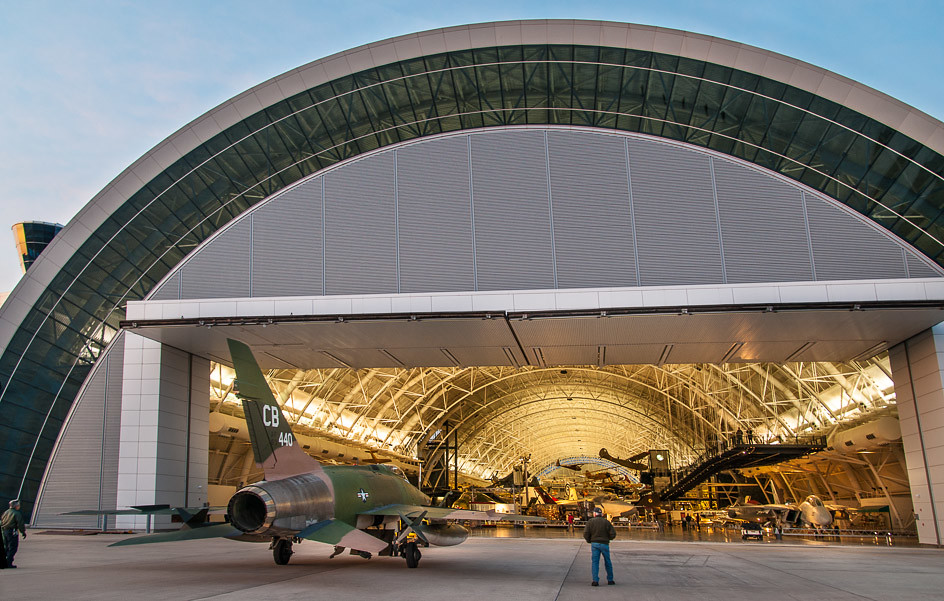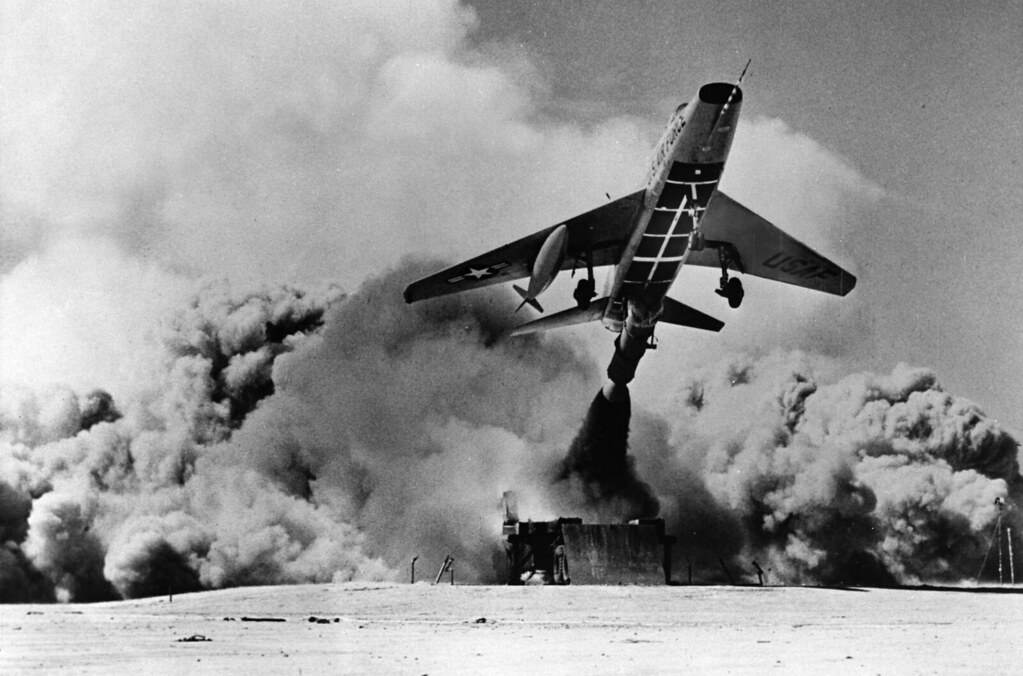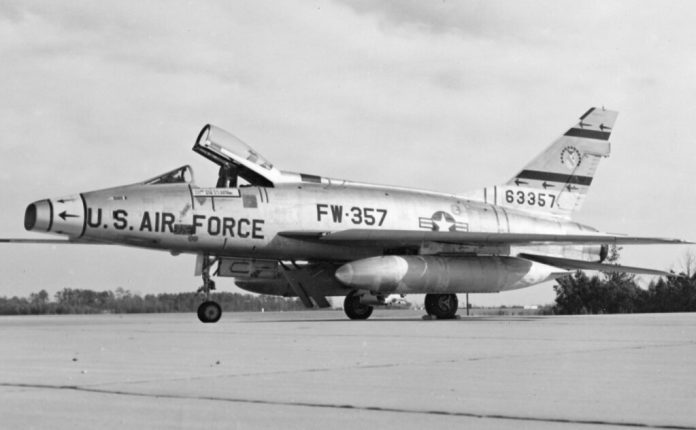
The North American F-100 Super Sabre, an American supersonic jet fighter, was crafted and manufactured by North American Aviation. As the inaugural member of the Century Series of American jet fighters, it stood as the United States Air Force’s (USAF) premier fighter aircraft capable of achieving supersonic speeds in level flight.

During the Vietnam War era, the North American F-100D, derived from the F-100 interceptor, gained widespread utilization. Introduced into service in 1956, this fighter-bomber variant boasted a supersonic autopilot, enhanced fin and rudder, inboard landing flaps, and underwing pylons capable of accommodating payloads weighing up to 3,200 kg (7,040 lb) of ordnance.

The F-100, conceived in the late 1940s as an upgraded successor to the F-86 Sabre, underwent extensive development and testing before entering USAF service in 1954. Despite initial challenges such as yaw instability and fatal accidents, remedial work allowed the F-100 to return to flight by 1955.

Responding to TAC’s need for a fighter-bomber, the F-100C and F-100D were developed, along with variants like the two-seat F-100F supersonic trainer. While some F-100As were withdrawn in the late 1950s, escalating tensions prompted their return in 1962. Many F-100s were deployed in combat during the Vietnam War but were eventually replaced by the Republic F-105 Thunderchief and LTV A-7 Corsair II. Despite proposed models like the F-100B and F-107, only a few variants entered production, with some F-100s repurposed for aerial reconnaissance and electronic warfare roles.
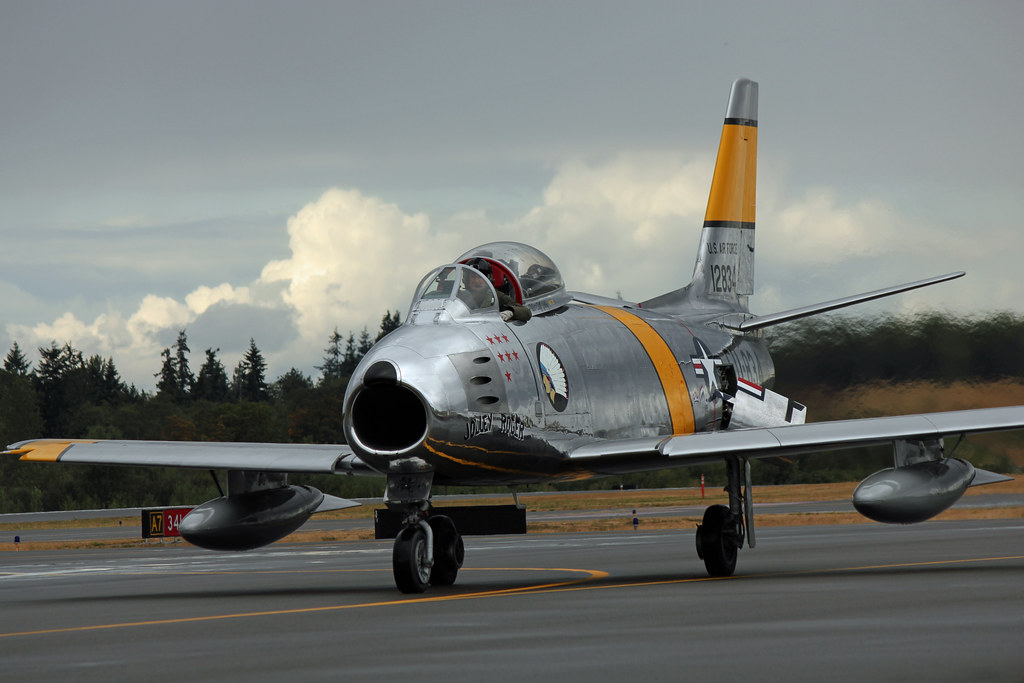
The F-100 originated from a design study conducted by North American Aviation in 1949, initially named Sabre 45 due to its 45° wing sweep and based on the successful F-86 Sabre. An unsolicited proposal for a supersonic day fighter was submitted to the USAF in January 1951, leading to the presentation of a mockup in July of that year. The USAF issued a requirement for an air superiority weapon to be operational by 1957, prompting the development of a refined version of the Sabre 45.
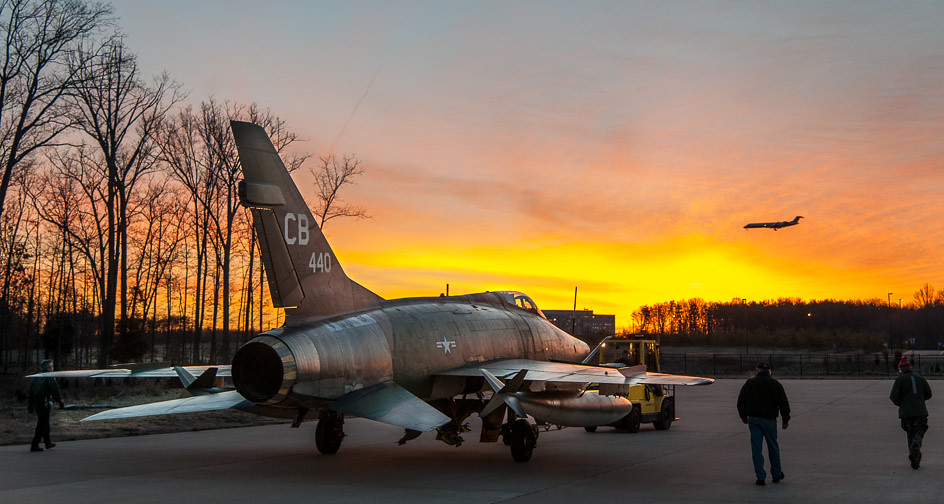
Despite over 100 configuration change requests by mid-November 1951, the F-100 was officially accepted that month. Orders for two prototypes were placed in January 1952, followed by additional production orders for 23 F-100As and 250 more in August of the same year. Development temporarily slowed as North America focused on meeting demands for the Korean War by improving and increasing production of the F-86.

On May 25, 1953, North American Aviation’s Chief Test Pilot George Welch piloted the first flight of the YF-100A, achieving supersonic speed at 35,000 feet, marking the first instance of level flight exceeding Mach 1 in a jet. Despite initial success, testing revealed three major deficiencies in the design, necessitating corrective measures. The second prototype flew on October 14, 1953, followed by the first production F-100A on October 29, 1953. However, progress was hindered by a three-month strike by North American employees later that year.
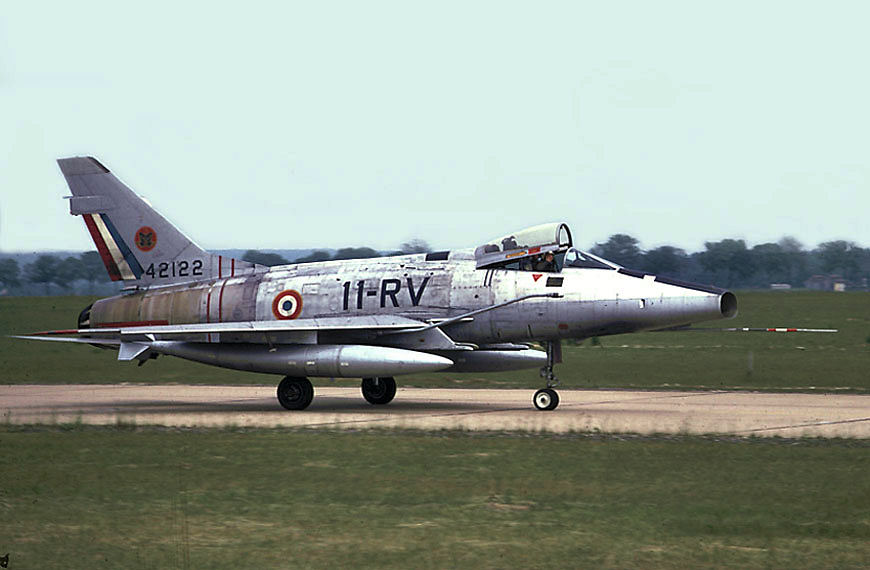
Operational evaluations conducted by the USAF in November 1953 and December 1955 highlighted the F-100’s superior performance but also identified various deficiencies, delaying widescale deployment. Tactical Air Command (TAC) pressed for urgency in F-100 production, leading to alterations in the program to prioritize a new fighter-bomber variant capable of delivering nuclear bombs.
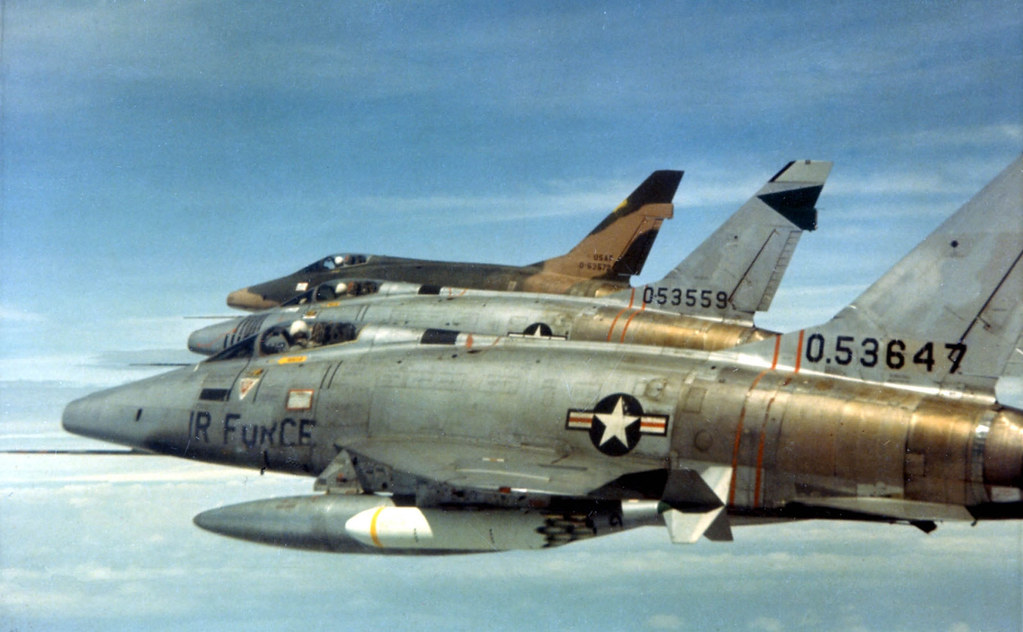
In February 1954, the USAF awarded the first production contract for this variant, the F-100C, which performed its maiden flight in March 1954. Production accelerated with the establishment of a second production line in September 1954 but was later reduced due to fatal accidents. After remedial work, flight restrictions were partially lifted in February 1955, and deliveries resumed shortly after.
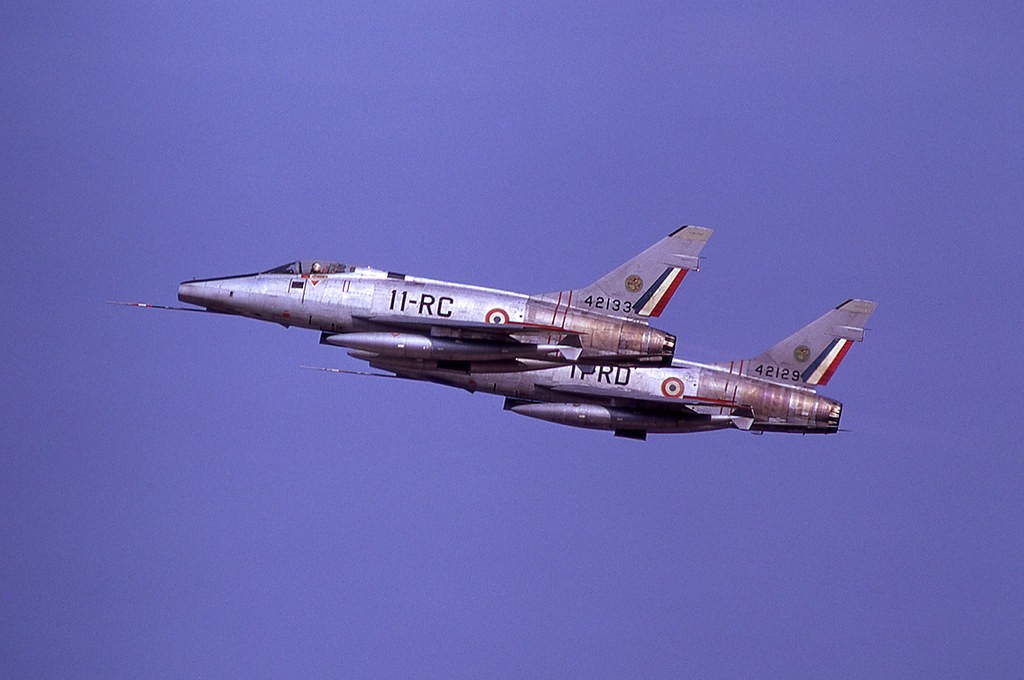
During the F-100’s development, various adaptations and derivatives were considered. In mid-1954, plans for an interceptor model, the F-110B1, emerged as a potential backup for the Convair F-102 Delta Dagger. However, the challenges faced with the F-100A indicated that even with expected improvements, it would not surpass the F-102 in meeting operational requirements.
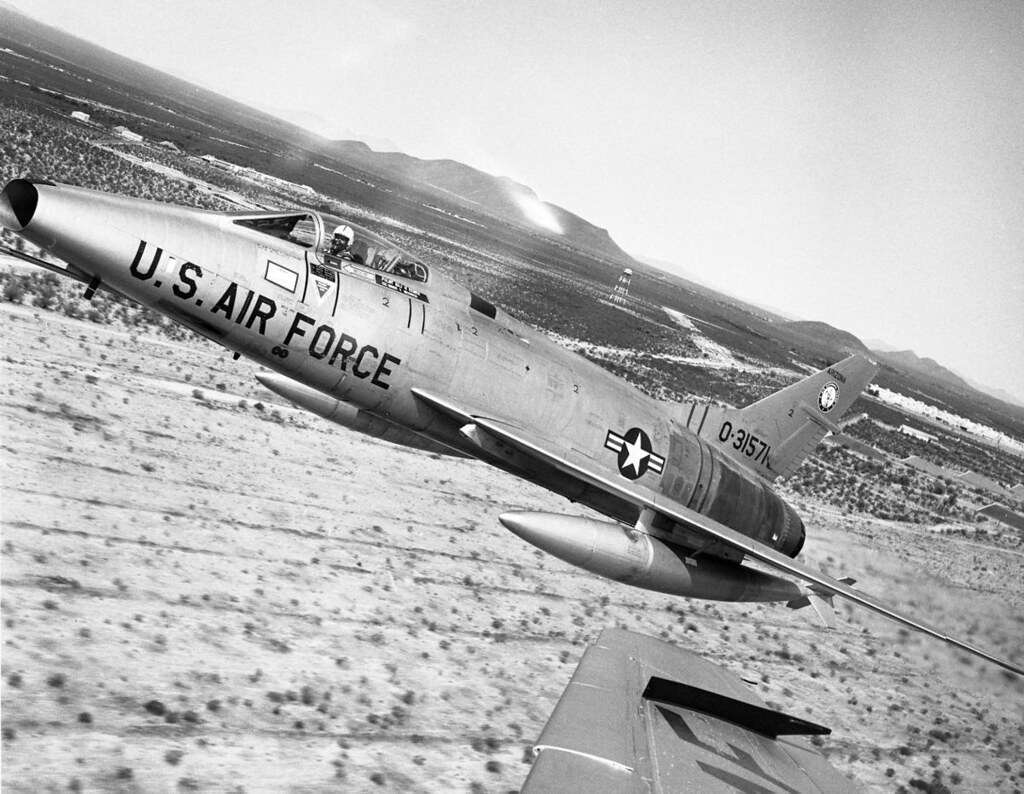
The definitive version of the F-100 emerged as the F-100D, responding to Tactical Air Command’s (TAC) request for a more advanced fighter bomber. Equipped with upgraded avionics, autopilot, and compatibility with the AIM-9 Sidewinder missile, the F-100D prioritized ground-attack capabilities while retaining secondary fighter abilities.

In December 1954, a new operational requirement, GOR 68, prompted North America to propose a heavily modified version of the F-100, designated the F-107, for high-speed performance up to Mach 2. However, the F-107 was ultimately passed over in favor of the Republic F-105 Thunderchief. Additionally, responding to a need for a supersonic trainer, North America proposed and produced the F-100F trainer, with the prototype making its first flight in August 1956.
related images you might be interested.
